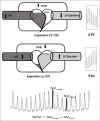Intraoperative fluid management: Past and future, where is the evidence?
- PMID: 29628846
- PMCID: PMC5875224
- DOI: 10.4103/sja.SJA_689_17
Intraoperative fluid management: Past and future, where is the evidence?
Abstract
Currently, there is no consensus about the optimum intraoperative fluid therapy strategy. There is growing body of evidence supports the beneficial effects of adopting "Goal-directed therapy" over either the "liberal" or "restrictive" fluid therapy strategies. In this narrative review, we have presented the evidence to support the optimum strategy for intraoperative therapy. In conclusion, whatever the intravenous fluid replacement strategy used, the anesthesiologist must be prepared to adjust the composition and rate of the fluids administered to provide sufficient intravascular fluid volume for adequate perfusion of vital organs without overwhelming the glycocalyx function with fluid overloads.
Keywords: Anesthesia; fluid therapy; goal-directed; intraoperative; liberal; monitoring; restrictive.
Conflict of interest statement
There are no conflicts of interest.
Figures
References
-
- Bundgaard-Nielsen M, Secher NH, Kehlet H. ’Liberal’ vs.’restrictive’ perioperative fluid therapy – A critical assessment of the evidence. Acta Anaesthesiol Scand. 2009;53:843–51. - PubMed
-
- Brandstrup B, Tønnesen H, Beier-Holgersen R, Hjortsø E, Ørding H, Lindorff-Larsen K, et al. Effects of intravenous fluid restriction on postoperative complications: Comparison of two perioperative fluid regimens: A randomized assessor-blinded multicenter trial. Ann Surg. 2003;238:641–8. - PMC - PubMed
-
- Holte K, Sharrock NE, Kehlet H. Pathophysiology and clinical implications of perioperative fluid excess. Br J Anaesth. 2002;89:622–32. - PubMed
-
- Nisanevich V, Felsenstein I, Almogy G, Weissman C, Einav S, Matot I, et al. Effect of intraoperative fluid management on outcome after intraabdominal surgery. Anesthesiology. 2005;103:25–32. - PubMed
Publication types
LinkOut - more resources
Full Text Sources
Other Literature Sources
Miscellaneous



